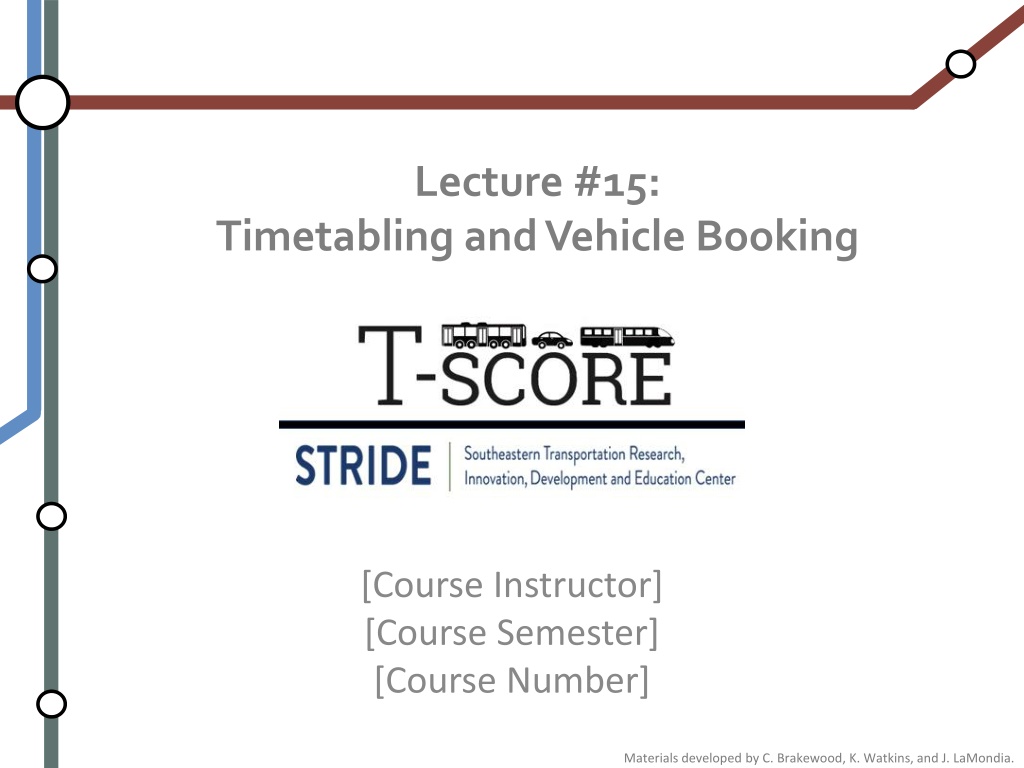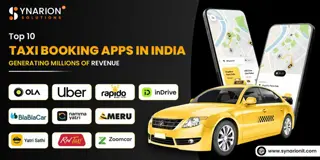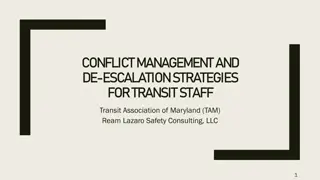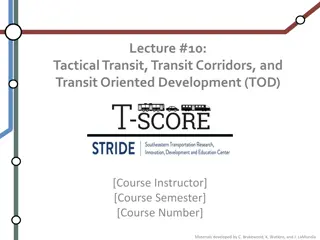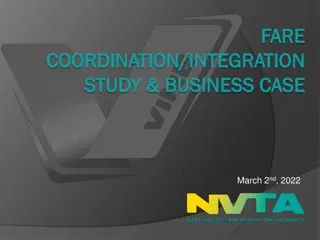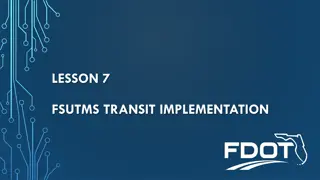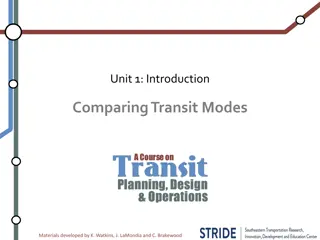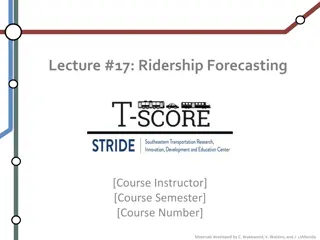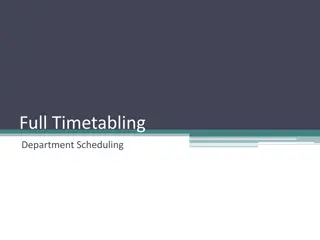Understanding Timetabling and Vehicle Booking in Transit Planning
Timetabling plays a crucial role in transit operations by determining the schedule for vehicles passing each stop on a route. Efficient timetabling ensures consistent service and helps minimize operating costs. Vehicle blocking, crew scheduling, and other steps are involved in service planning. Challenges in scheduling transit services include balancing passenger demand, optimizing vehicle frequencies, and resource constraints. Key inputs and terminologies in transit planning, such as running time, layover time, cycle time, and half cycle time, are essential for developing effective schedules.
Download Presentation

Please find below an Image/Link to download the presentation.
The content on the website is provided AS IS for your information and personal use only. It may not be sold, licensed, or shared on other websites without obtaining consent from the author. Download presentation by click this link. If you encounter any issues during the download, it is possible that the publisher has removed the file from their server.
E N D
Presentation Transcript
Lecture #15: Timetabling and Vehicle Booking [Course Instructor] [Course Semester] [Course Number] Materials developed by C. Brakewood, K. Watkins, and J. LaMondia.
Outline Part 1: Timetabling Part 2: Vehicle Blocking
Service Planning Steps (Synonyms) Network design Route design and stop layout Frequency determination Timetabling / Schedule Building Vehicle blocking / Schedule Blocking Crew scheduling / Runcutting & Rostering TCRP Report 135
Timetabling is the process of developing a schedule of when vehicles will pass each stop on a route also known as service schedule is critical to ensuring consistent service and minimize operating costs
Connecting to Last Part Last part: Determined the required number of vehicles/hour to meet passenger demand along each route Now: Determine schedule (and number of) vehicles need to support these frequencies (called a Timetable)
Schedule A Simple Example: KAT Route 17 http://katbus.com/199/Route-17-Sutherland
Scheduling Transit is Challenging Poor Scheduling = Unreliable Service Under-serving passenger demand Vehicles slow down, fill up Over-serving passenger demand Vehicles run too fast, empty Subject to changing passenger demand traffic patterns Limited resources
Key Inputs & Terminology Key inputs (Hickman): Frequency (determined in previous part) Expected travel time between stops (typically from historical data) Key terminology (TCRP Report 135): Running Time: the time it takes for a vehicle to travel the length of a route. Running time does not include layover time. Layover Time: The time between the scheduled arrival and departure of a vehicle at a transit terminal. Cycle Time: Sum of the round-trip running time plus layover time. Also known as round trip cycle time. Half Cycle Time: running time plus layover time Source: TCRP Report 135, Pages 1-3; 2-3; 3-3
Scheduling Process for a Route Determine basic schedule structure Headways (h) Travel times between stops (tij) Dispatch/departure time (t0) Layover time (tl) Adapt structure to deal with variability Source: Hickman Timetabling & Scheduling
Equations for Scheduling The timetable can be created simply using the following structure, with n stops on the route and k+1 vehicles to dispatch: Source: Hickman Timetabling & Scheduling
Dispatch (Departure) Times Agencies can choose: Clockface times Start runs on specific/ recurring times Easy to remember (e.g., 15-minute headways at X:00, X:15, X:30, X:45) Coordination times Timed to reduce bus driver idling Saves funds Source: Hickman Timetabling & Scheduling
Space-Time Diagrams Source: Ceder, Public Transit Planning & Operation (2007); Page 90
Full Route (Cyclic) Space-Time Diagram Source: Hickman Timetabling & Scheduling
Applying Space-Time Diagrams Useful to Coordinate passenger transfers Look at overlapping times between routes and set dispatch times to coordinate stops Reduce vehicle requirements Shows number of vehicles operating at any given time Change dispatch and layover times to reduce number of vehicles Source: Hickman Timetabling & Scheduling
Consideration #1 Adjust timetable to keep even headways Easy for passengers to remember Must be very confident about arrival rates Leads to uneven numbers of passengers Must be conscientious about traffic levels Slow down/ speed up service
Consideration #2 Adjust timetable to keep even vehicle loads Keeps demand even amongst vehicles Must be very confident about arrival rates Need to match spikes in demand Must also be confident about traffic patterns Need to ensure exact arrival times Can be confusing to passengers, since pattern of headways vary
Consideration #3 Adjust timetable to shorten some vehicle paths If demands and traffic are not compatible, you can have vehicles only serve part of a route Referred to as Short turns - A trip that terminates at an intermediate point instead of traveling the full length of the route.
Communicating Timetables Source: KAT website
Communicating Timetables Source: Transit App
Successful Timetables If we ve done our job correctly, passengers should Arrive on time for transit Seamlessly transfer vehicles Not think too hard about their timing Find the schedule intuitive Not realize the work that went into it
Service Planning Steps (Synonyms) Network design Route design and stop layout Frequency determination Timetabling / Schedule Building Vehicle blocking / Schedule Blocking Crew scheduling / Runcutting & Rostering TCRP Report 135
Connecting to Last Part Last part: Determined schedule of service for routes in the service area (based on frequency and running times) Now: Select the number of vehicles to serve those routes
Vehicle Requirements The relationship between cycle time c, headway h, and number of vehicles, n, is: c = n*h Simple example: Headway: 10 minutes Cycle time: 60 minutes How many vehicles are needed?
Vehicle Scheduling Breaks down service schedule into a specific set of trips that a single vehicle will cover Assignments for individual buses. May include >1 route, >1 driver Also referred to as blocking Timetable: Passengers Block: Vehicles
Why is it Important? Blocking dictates the cost associated with operating a transit system on a given day Vehicle operation Worker assignments Goal: To minimize time, budget, distance traveled by all vehicles on network
Components of Blocking Pull-out time from depot Sequence of trips from timetable Including time at specific locations Deadhead/ Interlining trips Pull-in time to depot Source: Hickman Timetabling & Scheduling
Additional Terminology (1/2) Pull-out time: The time the vehicle spends traveling from the garage to the route (e.g., first stop). Pull-out time is included in vehicle hours, but not in revenue hours. Pull-in time: The time the vehicle spends traveling from the route (e.g., last stop or terminal) to the garage. Pull-on location: the place on a route where a vehicle begins revenue service. Also referred to as a fit-in point. Pull-off location: the place on a route where a vehicle ends revenue service. Hooking: The process of attaching the end of a trip in one direction to the beginning of a trip the other direction. A block is a series of hooked trips. Source: TCRP Report 135 (Page 3-5)
Additional Terminology (2/2) Time Points: Designated locations on a route used to control the spacing of vehicles along the route. Vehicles should not pass through a time point either before or after the specified time on the schedule. A route may contain several time points depending on its overall length. Rule of thumb: time point spacing is usually every seven to 15 minutes along a local route. Often at major intersections, major trip generators or key destinations. Source: TCRP Report 135 (Pages 2-7 & 4-32)
Example Schedule for Route 97 Blocking (#9701) Source: TCRP Report 135 (Page 4-8 & 4-12)
Blocking Considerations Layover & Recovery Times Rest or break time for operators along a route Buffer time built into the schedule to keep on-time Interlining Switch vehicle from one route to another (with the same driver without going back to the garage) Deadheading Time and distance that a bus needs to travel in places where it will not pick up passengers Typically required to get buses to and from their garage Non-revenue travel Short Turns A trip that terminates at an intermediate point instead of traveling the full length of the route. Turnback: The location where a short turn trip turns around to begin service in the opposite direction.
Example of Interlining Source: University of Texas Shuttle System
Blocking Constraints Each trip in the timetable must be made by a vehicle. A vehicle cannot be assigned more than one trip at any point in time. If a vehicle must be repositioned for a trip, the time and distance it takes to get to the new start point must be considered.
Challenges to Blocking Frequent bus service More than 1 depot location Coordination over multiple routes
Concluding Remarks Timetabling: Coming up with a solid timetable is critical to ensuring transit reliability. There are many components to calculating and adjusting timetables to meet agency needs. Timetables can be displayed in different ways Vehicle blocking: Blocks are like schedules but for the vehicles. Vehicle blocking can be a complex process. It is critical to financial stability of agencies.
References Materials in this lecture were taken from: Mark Hickman, Fundamentals of Transportation wikibook, Network Design & Frequency , http://en.wikibooks.org/wiki/Fundamentals_of_Tra nsportation/Network_Design_and_Frequency Timetabling & Scheduling , http://en.wikibooks.org/wiki/Fundamentals_of_Tra nsportation/Timetabling_and_Scheduling. Avi Ceder, Public Transit Planning & Operation (2007). TCRP Report 135
